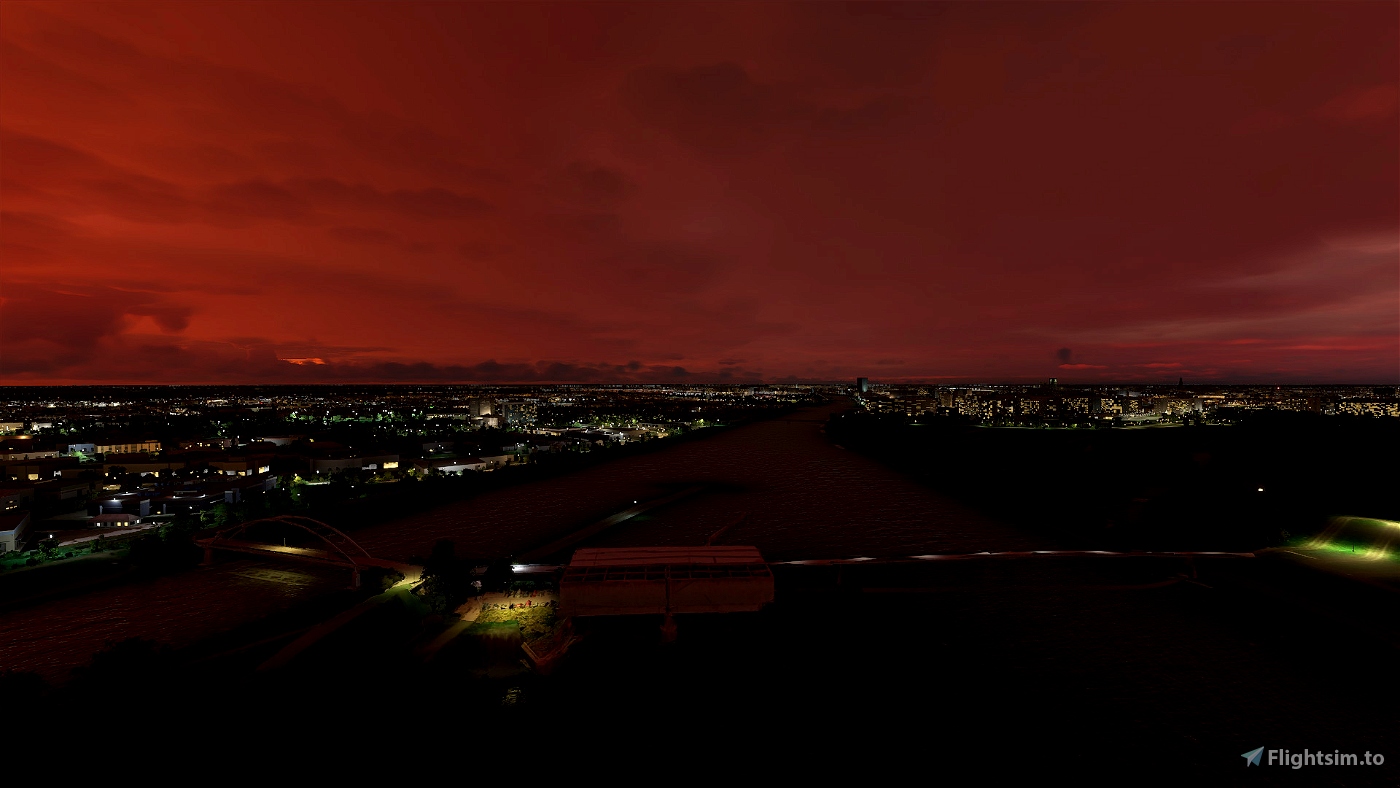The Plofsluis served to quickly dam the Amsterdam-Rhine Canal in case of threat of war to prevent the water from the surrounding areas from flowing away via the canal in the event of inundation. In 1934 work began on the construction of the Amsterdam-Rhine Canal, which involved the widening and partial replacement of the Merwede Canal. The construction would create a gap in the Waterline. A solution was found for this, which, on the one hand, would not hinder shipping traffic and, on the other hand, could quickly close the canal in the Plofsluis.
The Plof lock is in principle a special flood barrier. Above the Amsterdam-Rhine Canal is a series of five concrete compartments with a relatively weak bottom. The bins could store about 40,000 tons of sand, gravel or rubble. [1] When there was a threat of war, the bottom was blown up, causing the contents to pour into the Amsterdam-Rhine Canal. As a result, the channel was closed and the inundation water could not flow away. [1] The lock function could therefore only be activated by inflating the explosion lock; an action that was only possible once.
The lock is approximately 70 m long, 40 m wide and 8.5 m high. The bottom was approximately 6 meters above the canal level. [1] The structure has one central, elongated, rounded concrete bridge pillar with a passage opening on both sides and also heavy concrete abutments. The construction of this lock started in 1937, but it was not yet completed when the Second World War broke out in the Netherlands. [1] Four cast-steel domed casemates with waiting room and a wall thickness of 17 cm were built at the explosion lock for the defense of the work.
Channel divertedThe Amsterdam-Rhine Canal was completed in 1952. Gradually it became clear that the narrowing of the canal at the explosion lock was an obstacle for modern inland vessels. Because of the costs involved in demolishing the construction, the canal was dug on site around the lock in 1981. [2] Part of the Batteries on the Overeindseweg, an older defensive work in the New Dutch Waterline, has disappeared.
The explosion lock can still be seen above the Amsterdam-Rhine Canal near Nieuwegein and is also known to shipping as "the concrete block". In order to be allowed to spend the night at the lock, 2-cone ships must first reserve a berth and if this has not happened, 1-cone ships may berth and spend the night.
Since February 1978, shooting sports club Ultrajectum has access to this location where several covered shooting ranges have been realized.
The Waterliniepad runs along the explosion lock. Since 2015, there has been a bicycle bridge next to the Plof lock. This bridge was opened by Tour de France director Christian Prudhomme
Source: Wikipedia
File credits
This free creation contains content from Google Maps or Google Earth. In accordance with Google Terms of Services and especially point 2.2 of Google Maps/Google Earth Additional Terms of Service, this creation is based on « fair use » or « fair dealing » of the data provided by google throught its services. No commercial use or any gain is or will ever be made by the author of this creation, who doesn’t own anything regarding google assets but a simple user Licence. According to the following document https://www.google.com/intl/en-GB/permissions/geoguidelines/, the author is freely sharing a creative application of Google Maps or Google Earth. The author will not recieve any form of retribution for sharing his work, even general donations from users of file hosting web services under the form of « rewards » or « tips ». If this content would be found somewhere where it is provided in exchange of money or any kind of retribution, I wouldn’t be with the consent of the author who will stick to strict free content creation diffusion.
Part of this content including 3d data and textures is copyrighted by
Imagery ©2020 Google, Imagery ©2020 CNES/ Airbus, Maxar Technologies,
USDA Farm Service Agency, Map data ©2020 Google.







1 months ago
CaptainMoonlight
4 years ago
simbanl